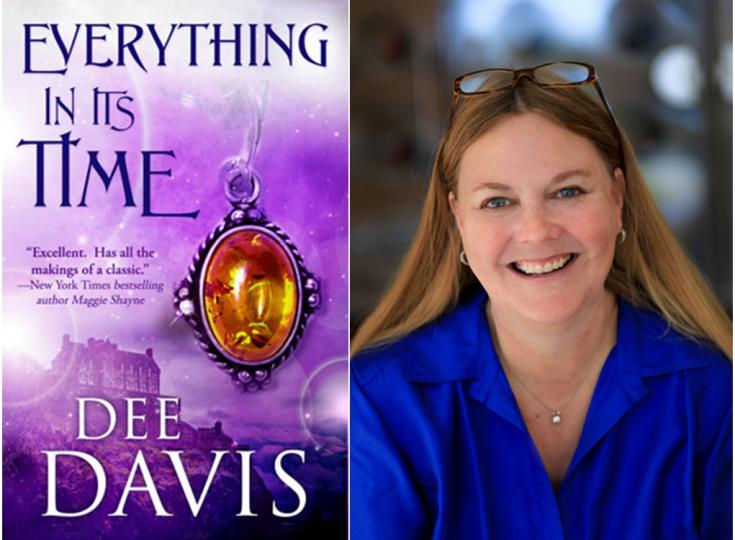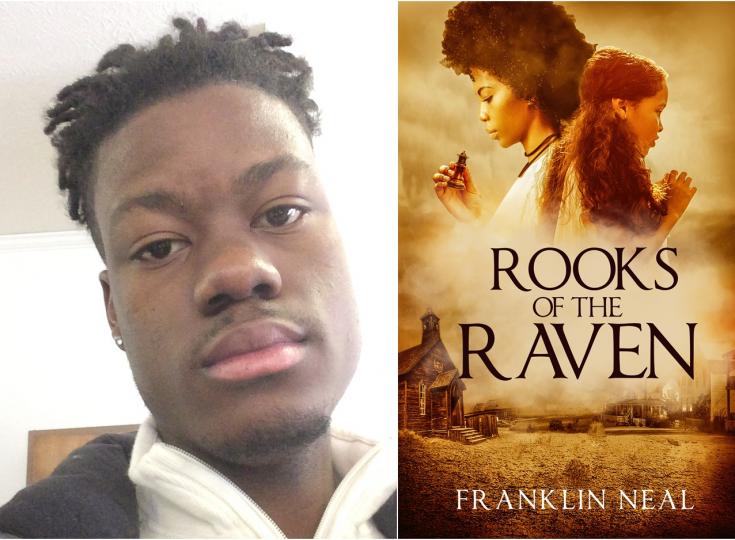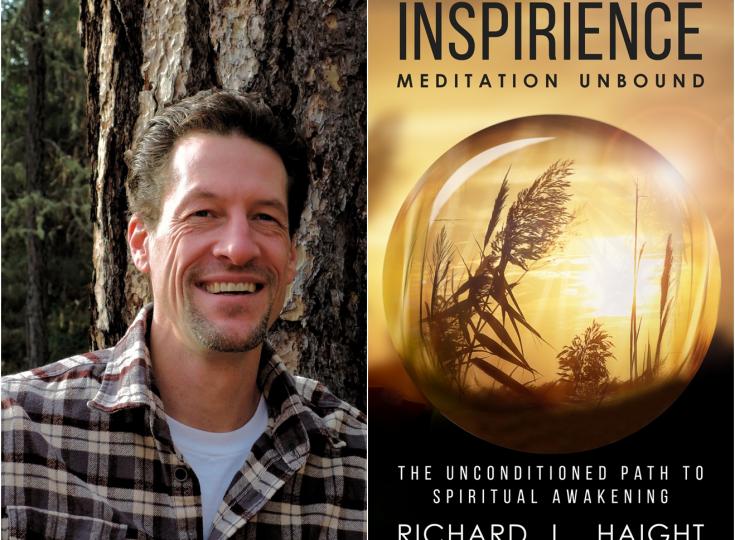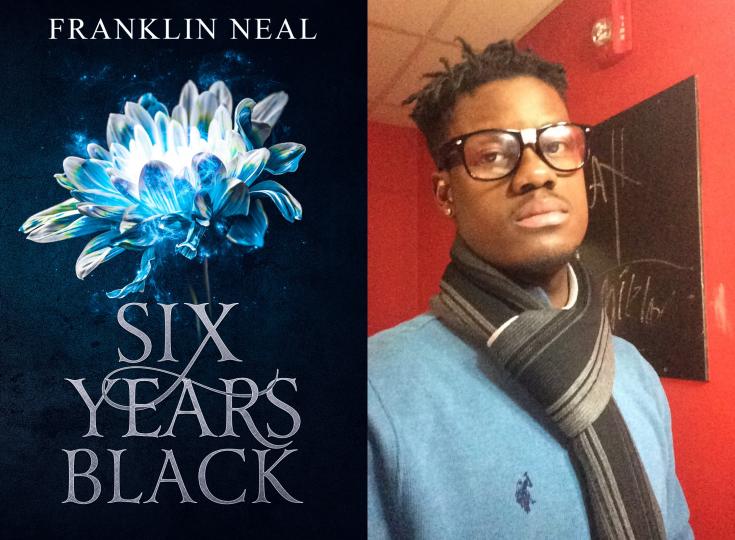Minerva Hart - One-of-a-kind Action, Adventure and Post-Apocalyptic Story
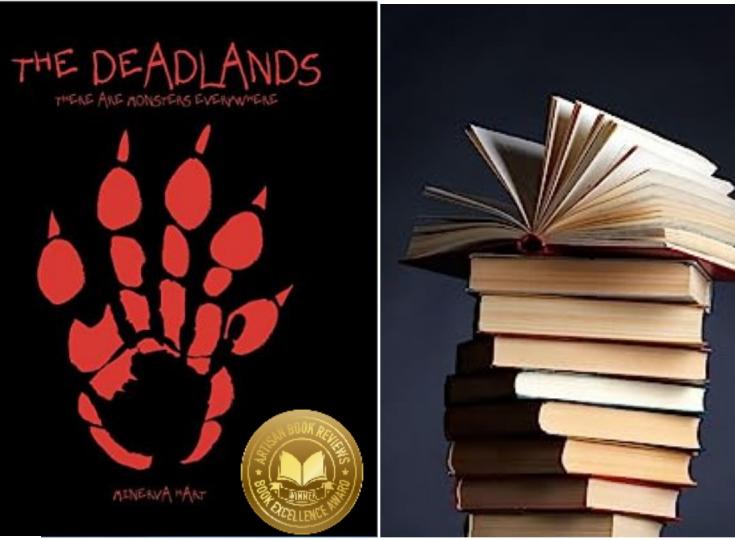
Minerva Hart lives in Rome, Italy with her husband. She graduated from John Cabot University in 2019 with a Bachelor's Degree in Literature. She has published two novels thus far, both of which won first place in the ABR Book Excellence Award Contest. As our Author of the Day, she tells us all about her book, The Deadlands.
Please give us a short introduction to what The Deadlands is about.
The Deadlands takes place in the 2070s, in what was once the United States of America but has since been renamed 'The Deadlands' due to its reputation of being an inescapable death trap. Thirty years prior, the permafrost and icebergs melted completely, releasing a virus known as the Splicer's Sickness. Whoever catches it turns into a terrifying half-human, half-animal creature that is dead-set on infecting as many people as possible. That is, unless your body rejects the infection, in which case you rapidly - and painfully - begin to decompose while still alive. There's also a third possible outcome, but no spoilers. Since the virus's violent takeover, humanity has more or less eked out a living in this new world: People live in walled communities that grow their own food, hunters and healers are prized, and even children are taught how to fight at an early age. It is one such community in Canada that gets quite the surprise when a small ship pulls anchor in their harbor. Aboard are two humans and - to everyone's shock - two splicers still fully capable of speech and human behavior.
What inspired you to write this story? Was there anything that made you want to tackle this?
The initial idea came about through a combination of my lifelong fascination with world mythology (regardless of origin, these stories often include creatures with half-human, half-animal appearances) and a desire to add to the post-apocalyptic genre. I've always appreciated the genre because its stories answer the question, "What happens after the end of modern society?" Some answer it brilliantly. Others, I find to be outlandish, dumb, or simply unremarkable. But still, points for effort. Some of my favorite books in the genre are 'The Road' by Cormac McCarthy, 'World War Z' by Max Brooks, the 'Wool' trilogy by Hugh Howey, and 'I Am Legend' by Richard Matheson. In the field of video-games, 'The Last of Us', 'Horizon: Zero Dawn', 'The Floodlands', and 'Legend of Zelda: Breath of the Wild' are wonderful examples of the genre as well. These stories, regardless of where one might encounter them, depict terrifying, beautiful, fantastical, and grim worlds that we can't help getting lost in. I wanted to add to that impressive gallery, and I hope I've succeeded.
Why did you pick a plague as the catalyst for your story?
Post-apocalyptic novels usually have some severe catalysts, be they nuclear warfare, some uncontrollable environmental cataclysm nobody can stop, alien invasions, AI takeover, or - you guessed it - plagues or diseases. Some of the most effective post-apocalyptic stories ever include a plague of some sort bringing humanity to its knees. I mentioned 'World War Z' and 'I Am Legend', and there's plenty more out there. I find plagues to be frightening for the same reason Max Brooks finds zombies to be terrifying: Because you can't reason with them. You can't bribe them to leave you alone. You can't kill them as easily as you can, say, a poisonous spider or a madman coming at you with a knife. It doesn't care what you have to say or how you feel. Its goal is to spread, plain and simple. True, viruses and diseases can be cured, but how long until a cure is found? How many hundreds or thousands have to die before doctors and scientists crack the code? And what happens when you add the human element into the mix? People get scared. Nobody seems to have any answers. Countless will believe whatever comes easiest. And, as I depicted in my story, those in power are just as human as we are. They will make mistakes, just as we do. But unlike us, they are responsible for who knows how many lives. The plague is bad enough, but when you add our inevitable tendency to screw up, you get a disaster society might not recover from. That's what I wanted to depict in The Deadlands. Every place in the world is hit, but because the US was cursed with an overconfident president, it faced the brunt of the Splicer's Sickness. It got to the point that the rest of the world cut all contact with the United States, terrified that the sinking ship would drag them down with it.
Tell us more about Nessa Shirokuma. What makes her tick?
Those of you who have read the novel know Vanessa 'Nessa' Shirokuma well. For those of you who haven't, let me paint her in a few, broad strokes: She is a woman in her late twenties of Japanese and Swedish descent, with an extensive knowledge of zoology and botany. She loves to draw and write poems in her notebook, and she tries to stay as clean as she can in the Deadlands. Nessa is a kind, smart, compassionate, sometimes hot-tempered individual on a mission: To save her older sister, Laurel, from the Lightbringers, a deluded group of survivors in New York City. Everyone tells her that it's too dangerous, and that the Lightbringers will kill her on sight, but Nessa won't be dissuaded. While it's clear she's doing it out of love for her last living family member, Nessa is doing it for another reason, too: Out of guilt. While I won't divulge why, since that would definitely count as a spoiler, she and Laurel were in a rough patch when Laurel was kidnapped. If Laurel were to die, that would be their final interaction: One of distance and coldness. And Nessa would rather travel across the overgrown ruins of the country than let that happen.
Even though your story is set in a dark, post-apocalyptic world, a message of hope shines through. Why did you find this important to do?
Honestly, I've never liked stories that employ hopelessness. Tales that leave you feeling hollow, despairing, and sobbing. Stories where the main character endured trauma, only to either fail at their objective or have a punic victory. Stories where all is lost, and the world itself is left burning. Stories where curses can't be broken, and the characters are left to suffer as the cycle repeats. Stories where nobody is left alive. Not to knock on anyone who enjoys tales like that. If that is your juice and jam, then by all means. I'm not here to tell anybody what they should and shouldn't like. I'm just saying that sort of story doesn't work for me. Why? Because feeling hopeless and empty is easy. On some days, just looking at the news can be enough to leech away the colors from your day. Just as it can be easy to succumb to the fears and doubts that gnaw at you while you're trying to get some sleep. I didn't want to feed into that. Rather, I wanted to offer whoever reads my story a kernel of hope. Hope can be as rare as hen's teeth, and very hard to hold onto. I wanted to reach out and tell whoever reads my story: "It's okay. I know things are scary. I know it feels like it'll never get any better. I know you want it to be over, or you want things to go back to the way they were before. They can't go back because time only ever marches forward. But it doesn't have to be the end of the world. Try to find the beauty and light in your surroundings, and grit your teeth. Because someday, it'll be alright."
Readers say The Deadlands kept them at the edge of their seats. How did you pull this off?
It wasn't easy, believe me! I just kept telling myself that The Deadlands themselves are supposed to be dangerous. A sort of country-wide haunting that the rest of the world fears and avoids. So, it would make sense that danger lurks in every corner. If it were a walk in the park, well, then the rest of the world would look like brainless cowards, wouldn't they? As for the flow of the action scenes, I watched and read stories rife with action, and I studied the scenes of interest. I asked myself, "How quick should it be? How bloody? What wounds should the characters take from this encounter?" I wanted it to be quick and intense, a real adrenaline rush. And I kept rereading and rewriting those scenes until I was satisfied. And I learned from those stories to keep the pace moving, even during the quieter and more contemplative scenes. So, I did my best to incorporate that in The Deadlands. I wanted readers to be invested in Karl and Nessa's journey, and they could hardly do that if they got bored!
This is a fresh take on the zombie/vampire concept where a single bite transforms infected people into beasts. How is your infected different?
For one thing, I strongly imply that the Splicer's Sickness passed through the world at least once before. The characters come across old mythology texts and take in drawings of chimeras, sirens, Nagas, and satyrs, and they cobble together a theory: Like those who found dinosaur bones and dreamed up dragons, folks discovered splicer bones and used them as the basis for fantastic creatures. I also worked hard to describe how such a vile phenomenon could make a comeback. Some splicers were frozen in the permafrost and icebergs, and when the ice melted, the corpses were released into the world once more. Fish and small animals ate the preserved corpses, and while they didn't transform, they became carriers of the disease. When those fish and animals were caught and consumed by humans, they passed the virus on to them. Thus, the first splicers were born. A lot of plague stories don't contain this many dominoes in the chain of disaster, but I wanted it to feel like a process. A terrible procedure we were too late to stop.
What was your greatest challenge when writing The Deadlands?
The characters. I always knew what I wanted for and from them, but characters are more complicated than simply what you want. You have to roll them around in your minds, add details and shadings you don't necessarily need to put in other elements of your story. They have to feel real to you. Then, and only then, can they come across as people, not props, in the story. You have to try to mold them like clay, but some characters surprise you. Like plants, they take on a life of their own. They grow here and there, they flower and wilt, in ways you never would've expected. So, when I went over the story, I did a lot of molding as well as weeding!
Do any of your characters ever take off on their own tangent, refusing to do what you had planned for them?
Ricocheting off what I said in the previous question, plenty of characters came to life in ways I never expected. Nessa and Karl were supposed to encourage each other to grow and develop, of course, but their interactions and their subsequent love story was so much more than I'd originally hoped for. Jaime, one of the scientists originally hired by the president to find a cure for the Splicer's Sickness, was originally little more than a means by which the duo - and, by extension, the reader - learned more about the Lightbringers and the US shortly preceding its fall. But he came alive in other ways. He had compassion. He was smart. He was desperate. And, in the end, he gets to do something he hasn't been able to do in thirty years: Write his own destiny. The president, too, came out more complex than I'd thought. From the beginning, I knew I wanted him to be a deluded despot, but it wasn't until later that I realized how much more effective he would've been as an antagonist if we saw the cracks in his facade. He acts like the ultimate figure of authority to his people, who all but worship him as a god, but if you find and pick at his old scar, you draw out the angry, remorseful young man he once was. Even the young splicer boy, Shane, came out more rounded than I'd planned. Having been an only child, with my thirtieth birthday not too far away and no kids of my own (at least not yet), I can't say I'm an expert on children. Instead, I drew to my experiences with my nieces and nephews. They are all cute, smart, amazing kids who I love to spend time with, and who I can't wait to see develop into awesome adults. So, I took a little piece from each of them, sewed it all together, and created Shane.
Did you plot out your entire story before you started writing, or did some of it just "happen" along the way?
Like with all my stories, I plan the big picture, but the little moments come to me as I write. In this case, the big picture is as follows: Thirty years after a plague topples modern society, a young woman goes to free her sister from a cult obsessed with the Old World. Along the way, she meets a former military man. They travel across the post-apocalyptic United States, learning to trust and depend on each other in order to stay alive. Eventually, this trust turns to love. But I didn't plan Nessa first seeing Karl's scars, and feeling a surge of sympathy for him - all the while he misinterprets her gaze as disgust. Nor did I plan Karl, Nessa, and two children they found passing around a soda they found in an old office building. It's the little things that help give a story color and humanity, and that's why I take care to include them as much as the main story beats.
When starting on a new book, what is the first thing you do?
The very first thing I do is write out the basic story, and all that it entails. I describe the plot (and change it later on, if needed), I give my characters their own appearances, personalities, and backstories, and I ask myself: What am I trying to say? What theme is there to this story? Once I'm satisfied with all these elements, I actually start on the first draft in a separate document. If I need to, I go back to this layout for certain character quirks or plot details. Think of this layout as gathering the ingredients to a cake (eggs, milk, flour, what have you) and turning on the oven before actually getting to work pouring, beating, mixing, and baking. The checking I do sometimes can be compared to reading the page about the cake in my cookbook, ensuring I'm not missing any important ingredients or steps.
Do you have any interesting writing habits? What is an average writing day like for you?
I don't know if I have any interesting writing habits. Like I said, I write out the basic story for myself before getting to the first draft on a separate document. A typical writing day for me usually starts at around nine in the morning. I'll get comfortable, turn on my laptop, and work on my story until five in the afternoon or so. I'll stop for my lunch break, and the occasional snack. But other than that, I'm a busy bee. Listening to instrumental music helps me work, too. Soundtracks from movies and videogames work the best. I'd say I write five days out of seven, sometimes even more.
What are you working on right now?
I'm working on my third novel, The Rampion Child. It's a dark retelling of the classic fairy tale, Rapunzel. We all know the story. That's why I wanted to take it in a new direction. In the original story, the witch hides a girl away in a tower (the motive depends on the version). But in my retelling, she takes it several steps further. And the 'prince' is more than just some pretty boy on a horse who happens to hear Rapunzel singing, sees her, and decides he wants to marry her. He isn't a prince at all, in fact, and knew Rapunzel before she wound up in her tower. He looks for her for years, all the while living a life and finding a love of his own, but he doesn't find her until years later. And what he finds has very little left of his old friend.
Where can our readers discover more of your work or interact with you?
Both my books, Primal Instinct and The Deadlands are available on Amazon, Kubo, Barnes and Noble, Apple Books, Draft2Digital, and Smashwords. You can look them up on Goodreads and Pubby, too. I have a Twitter account (@MinervaHart2022) if anybody wants to contact me via there.
